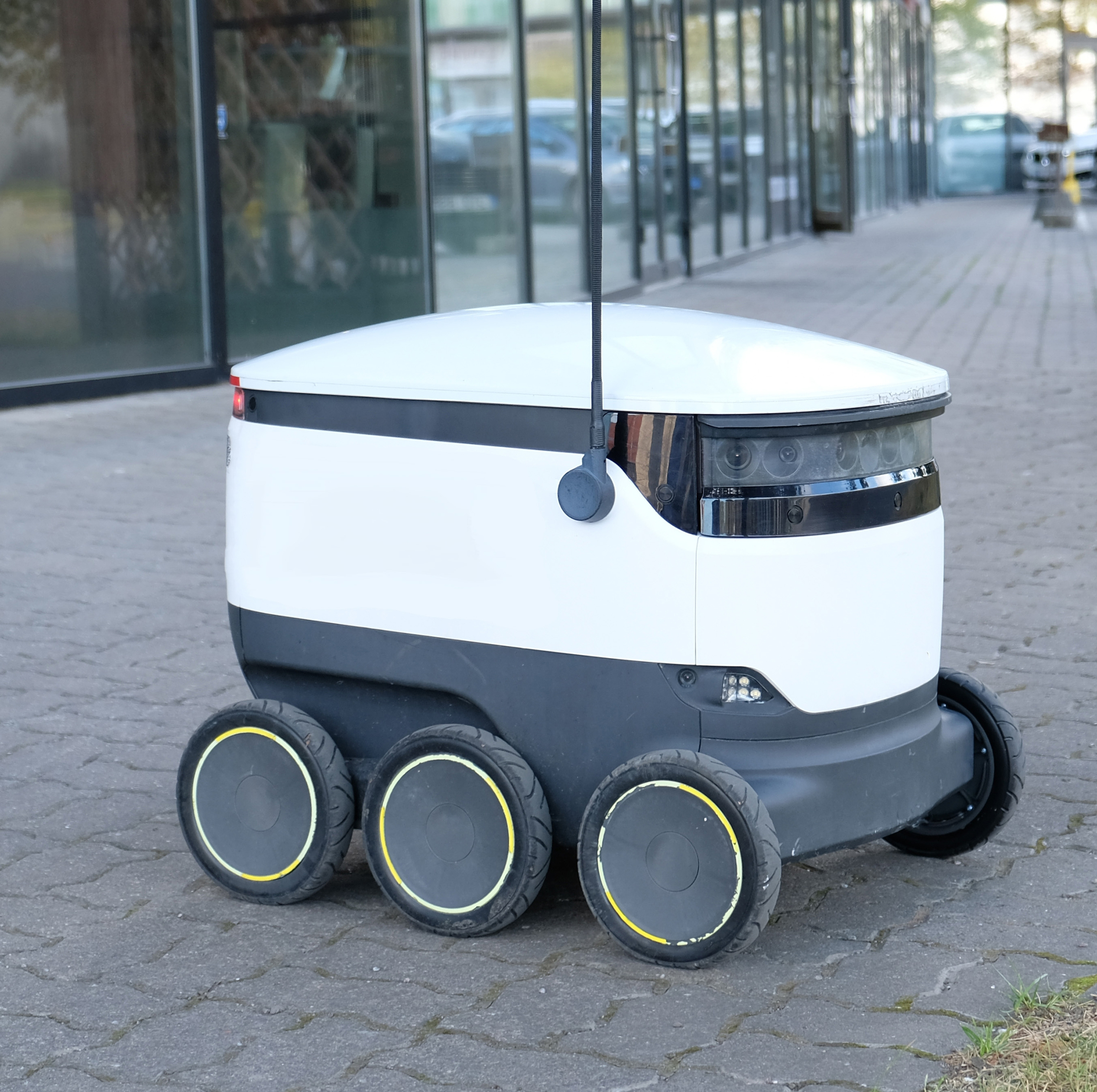Machines already flip burgers, fry potatoes and slice avocados for lunch. Some even deliver meals. While it’s still a bit of a novelty, especially to those who see for the first time a food-bearing wheeled robot roll by them on the sidewalk, it appears they are about to become far more common.
The anti-car, “15-minute-city” crowd should be ecstatic. But so should anyone who appreciates vibrant, ever-evolving cities.
Uber launched in 2014 Uber Eats, the world’s most popular food delivery service, with 88 million users buying from 11,000 restaurants. It is partnering with Santa Monica-based Coco Robotics. The latter is a “last mile” delivery service that deploys robots remotely piloted “by vetted and trained human operators whose first priority is road safety.” The Coco robots, which look a bit like a child’s wagon with a cover, also deliver groceries.
The potential to relieve urban gridlock by a robotic future can’t be overstated. When food is delivered in a small cart that navigates city sidewalks like humans rather than in a two-ton automobile that takes up about 90-square-feet of road space, there’s going to be less congestion – one less car to take up space, snarl traffic because it was in a wreck or break down in a travel lane. Technology is far better at solving traffic problems than heavy-handed public policy.
Robot delivery also benefits customers. Orders delivered by ground–based robots tend to arrive faster than orders dropped off by drivers. There’s no circling the block looking for an open space and no deliveries made to the wrong door. In their search for the shortest and most efficient routes, robots can cut across parks, avoid traffic jams and route shortcuts through parking lots.
Robots also feature contactless delivery, still important to many people even though years have passed since the pandemic subsided. No need to worry if the delivery boy has washed his hands when the food arrives in a clean machine that operates in a controlled environment.
Customers further benefit when there are no delivery drivers to be paid by restaurants and tipped by patrons. Lower operational costs mean savings for the consumers. (No one should worry about lost delivery jobs in the 2020s any more than we fret today over the buggy whip makers who lost their jobs to technological advancement – the automobile – in the late 19th century.)
Read Kerry Jackson’s Free Cities Center article about the 15-Minute City concept.
Read this Free Cities Center booklet about transportation.
The overall level of service-robot delivery, says one business news site, with its “unmatched” speed and efficiency, “enhances customer satisfaction and loyalty.” These particular models also never get tired or need to take a break. While delivery robots have been robbed, no one gets physically hurt.
For now, much of the focus of machine delivery is on food. But there’s no reason that can’t be expanded to all consumer goods, including prescription medications, which would be a tremendous help for the homebound and nearly homebound.
Yet there’s resistance. Seven years ago, in the hub of California tech land, San Francisco Supervisor Norman Yee introduced legislation that would have outlawed food-delivery robots.
“Our public spaces should not be commercialized,” he said, a principle he could not have possibly given a moment’s thought to, because if it were codified, it would block every delivery truck in town from reaching its destination, strip ads from city buses and shut down cabs and rideshare services.
He also cited safety concerns and job losses. (Offering victims of a robot wreck promo codes is a particularly innovative way to handle accidents.)
Yee eventually revised his proposal, moving from a ban to a permitting process and a regulatory regime. Later in 2017, the San Francisco Board of Supervisors unanimously approved Yee’s proposals to strictly regulate autonomous-delivery robots, barring them from most city streets. The rules limit companies “to three robots each, the city to nine robots in total, and confining robots to industrial areas in the southeastern part of the city,” the San Francisco Chronicle reports.
Opposition might be more common than should reasonably be expected. Jane Kim, another member of the San Francisco Board of Supervisors, agitated for “a statewide ballot measure that would penalize private enterprise for embracing automation in the workplace,” according to Michael Saltsman, managing director at the Employment Policies Institute, writing in The Wall Street Journal
The thinking is that “if an employer replaces a human worker with a robot or algorithm,” the employer should be punished with a tax, says the Jobs of the Future Fund website, an initiative spearheaded by Kim.
Walmart is using drones to make deliveries in Texas. Hungry college students don’t need to waste their limited study time grazing for food when they can have their meals sent by a robot. In the not-too-distant future, driverless taxis might even outnumber manned taxis.
Automation can be slowed but it can’t be stopped, not even by a “war on food delivery robots.” A report last year projected that the delivery robot market size will expand from $400 million last year to $1.8 billion in 2028. This is capitalism at work, unleashing innovation while at the same time making cities more livable.
Kerry Jackson is the William Clement Fellow in California Reform at the Pacific Research Institute.

